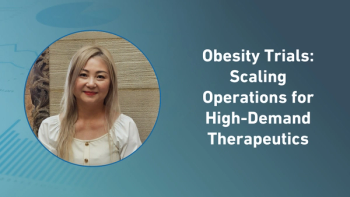
- Applied Clinical Trials-10-01-2012
- Volume 21
- Issue 10
Model Assisted Drug Development
Modeling and simulation has been heralded for some time as a possible answer to the industry's woes.
Productivity of the large pharmaceutical development organizations is decreasing as products trickle rather than surge out of the pipelines, all the while costs are skyrocketing. In response, we tend to point fingers elsewhere such as at the changing regulatory environment or the additional hurdle of health technology assessments. Is it really that easy?
Uwe Gudat
During my 15 years experience in the industry one aspect seems to be apparent, the difficulty that the genuine medico-scientific dialogue has in finding air time. Generally discussions are overshadowed by strategic desires, operational constraints, and financial limitations. Understandably the development cycle is subordinate to the business goal to sell medicines. However, without a reserved space of medico-scientific exchange and analysis (a type of nature reserve) there is a risk that decisions are made based on hopes and aspirations rather than facts and evidence.
Modeling and simulation has been heralded for some time as a possible answer to the industry's woes. It is not a wherewithal that a fairy godmother with a single wave of her magic wand resolves all issues and turns night into day. But it does offer a way forward to integrate a multitude of facts and beliefs into a single coherent analysis framework. Models represent virtual realities, a playground both for the creative and the critical mind. Emphasis must be put on the plural, it is the "s" that gives the models their strength. A single model is simply one possible reality, the validity of which we cannot be sure until the corresponding experiment is conducted and the results are on the table. The strength of the approach lies in being able to run a multitude of virtual experiments and observing how changing the input or model structure leads to different results or outcomes. Models and simulations thus provide a learning environment, a platform for exploration.
The other important attribute is that the model is impersonal: It is a thing. Why does this matter? It opens the door for a different kind of medico-scientific dialogue. After there is agreement on the model structure, perhaps encompassing a range of variants, scenarios can be defined based on numerous assumptions and eventualities. These include assertions on treatment effects, baseline characteristics of trial participants, and associated uncertainties etc. Once the "ifs," "buts," and "whens" have been defined the simulations are run. As the link between in- and output is dictated by the model, inconsistencies between assertions and conclusions are less likely. The resulting data sets provide a rich basis for decision making, highlighting convergence and divergence of the options and assumptions.
Modeling and simulation is as much a mindset as a method. It involves a structured analysis of the possible determinants of the outcome of a decision under uncertainty. By bringing many different features together in one organized framework (the model), allowing repeated reruns of the model (simulations), and presenting the results in an informative graphical format (comparative probability distributions) decision makers can be offered a more informative basis for the decisions they face. This leads to more well-founded expectations and greater transparency as to the confidence that drug candidates and proposals bring to the table. Systematically exploiting the power of models and simulations will allow those that take up the baton and run with this tool to regain important ground with respect to clinical development effectiveness and efficiency.
Uwe Gudat Head of Safety, Biosimilars Merck Serono. E-mail:
Articles in this issue
about 13 years ago
Applied Clinical Trials Digital Edition - October 2012about 13 years ago
Business and News Update October 2012about 13 years ago
Virtual Trials Come Under Growing Scrutinyabout 13 years ago
EDC Autoquery Rate - A Marker for Site Qualityabout 13 years ago
Warning Letter Studyabout 13 years ago
Diagnostics Needed for Personalized Medicineabout 13 years ago
Research, Practice, and Learningabout 13 years ago
The Local Touchabout 13 years ago
Managing Customer Expectationsabout 13 years ago
Act CoverNewsletter
Stay current in clinical research with Applied Clinical Trials, providing expert insights, regulatory updates, and practical strategies for successful clinical trial design and execution.






.png)



.png)



.png)
.png)
